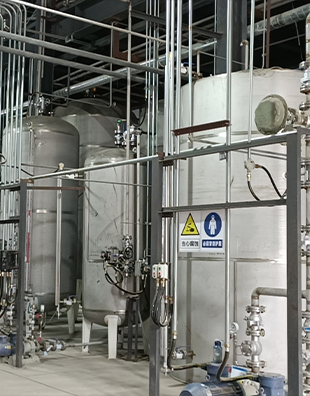Applications and Benefits of Isothiazolinone Compounds in Various Industries and Products
Understanding the Uses of Isothiazolinones in Modern Applications
Isothiazolinones are a class of heterocyclic compounds that have garnered significant attention due to their versatile applications across various industries. Known primarily for their effectiveness as biocides and preservatives, these compounds are widely utilized in consumer products, industrial formulations, and even agricultural practices. The rising awareness regarding microbial contamination and the importance of product longevity has propelled the demand for isothiazolinones, given their potent antifungal and antibacterial properties.
One of the most common uses of isothiazolinones is in the personal care and cosmetic industry. These compounds are frequently employed as preservatives to prevent the growth of bacteria, yeast, and mold in products such as shampoos, lotions, and makeup. With the increasing consumer demand for products that are free from harmful preservatives, isothiazolinones have become a popular alternative due to their effectiveness at low concentrations and their favorable safety profile when used appropriately. They help ensure that cosmetic products remain safe and effective throughout their shelf life, protecting consumers from potential infections caused by microbial contamination.
Understanding the Uses of Isothiazolinones in Modern Applications
The paints and coatings industry also leverages the advantages of isothiazolinones. These compounds serve as biocides in paint formulations, preventing fungal and algal growth on painted surfaces, which could otherwise lead to unsightly blemishes and degradation. The incorporation of isothiazolinones into paints and coatings provides long-lasting protection, especially in humid or damp environments where microbial proliferation is a concern.
isothiazolinone uses

In the realm of industrial applications, isothiazolinones are utilized as preservatives in a variety of aqueous-based systems, including adhesives, lubricants, and industrial washes. Their ability to inhibit microbial growth in these formulations not only preserves efficacy but also reduces the risk of product deterioration, thereby leading to cost savings for manufacturers and enhanced safety for end users.
Agricultural applications of isothiazolinones are also noteworthy. These compounds can act as biocides in agricultural formulations to protect crops from diseases caused by fungi and bacteria. Their use in agrochemicals contributes to more effective pest management strategies by providing a means to control microbial threats to crop health, ultimately supporting food security and agricultural sustainability.
However, despite the numerous benefits associated with isothiazolinones, it is vital to note that there have been rising concerns regarding their potential sensitizing effects. Instances of allergic reactions in some individuals have prompted regulatory scrutiny and calls for more research into safe usage levels. Thus, manufacturers and formulators must balance efficacy with safety, ensuring that products are safe for consumers while still providing the needed protection against microbial threats.
In conclusion, isothiazolinones have established themselves as invaluable assets in a range of products and applications, from personal care items to industrial formulations. Their antimicrobial properties play a crucial role in enhancing product safety and longevity, addressing consumer concerns about contamination, and supporting regulatory compliance. As research continues and the industry evolves, the role of isothiazolinones will likely expand, emphasizing the need for responsible and informed usage to harness their benefits safely.
-
Water Treatment with Flocculant Water TreatmentNewsJun.12,2025
-
Polymaleic AnhydrideNewsJun.12,2025
-
Polyaspartic AcidNewsJun.12,2025
-
Enhance Industrial Processes with IsothiazolinonesNewsJun.12,2025
-
Enhance Industrial Processes with PBTCA SolutionsNewsJun.12,2025
-
Dodecyldimethylbenzylammonium Chloride SolutionsNewsJun.12,2025





